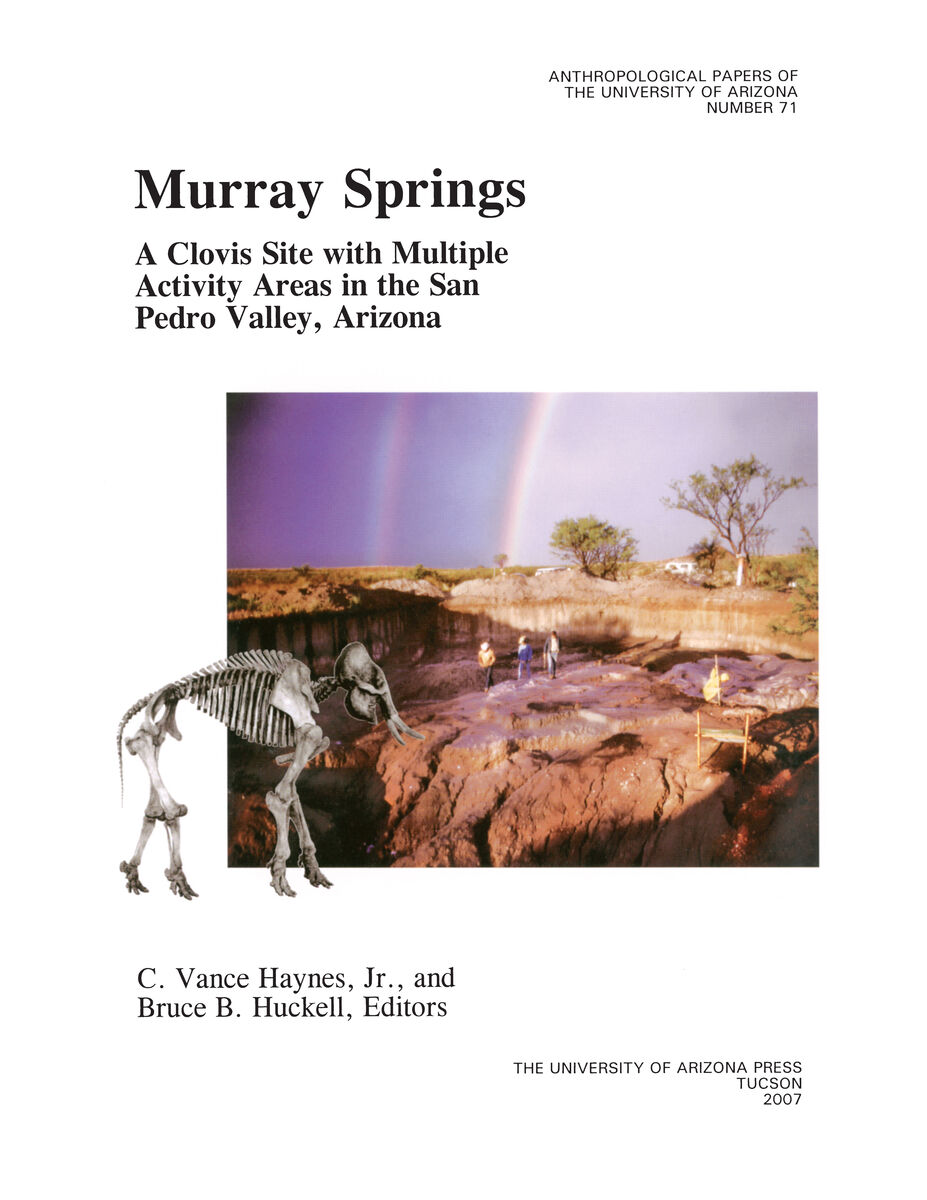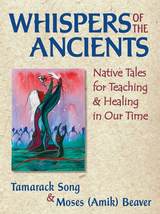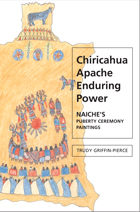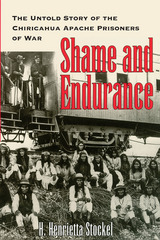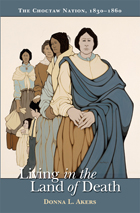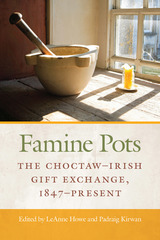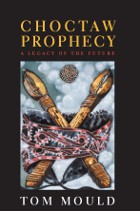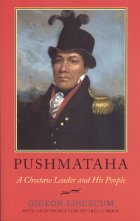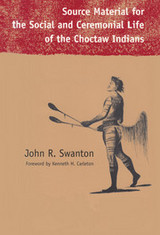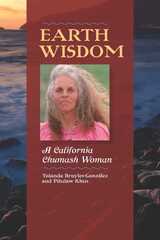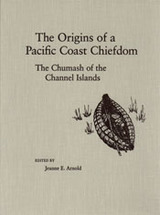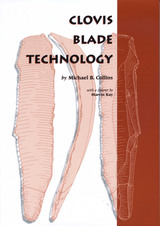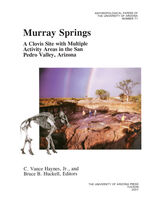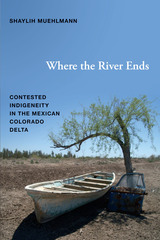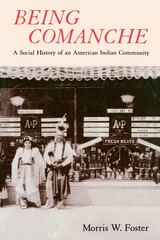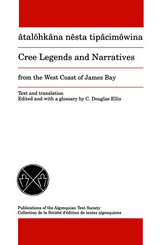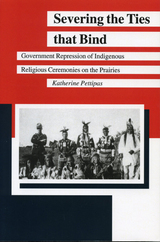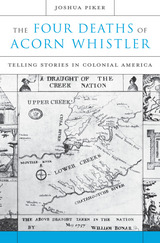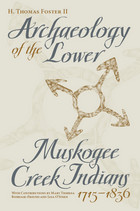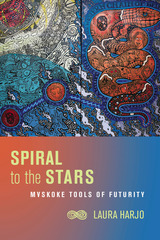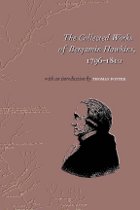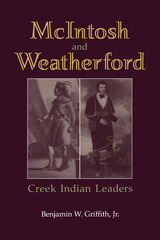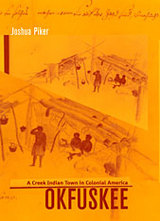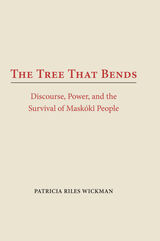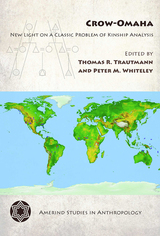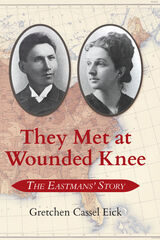Murray Springs: A Clovis Site with Multiple Activity Areas in the San Pedro Valley, Arizona
edited by C. Vance Haynes and Bruce B. Huckell
University of Arizona Press, 2007
Paper: 978-0-8165-2579-9 | eISBN: 978-0-8165-4769-2 (standard)
Library of Congress Classification E99.C832M87 2007
Dewey Decimal Classification 979.469
Paper: 978-0-8165-2579-9 | eISBN: 978-0-8165-4769-2 (standard)
Library of Congress Classification E99.C832M87 2007
Dewey Decimal Classification 979.469
ABOUT THIS BOOK | AUTHOR BIOGRAPHY | TOC
ABOUT THIS BOOK
The Murray Springs Site in the upper San Pedro River Valley of southeast Arizona is one of the most significant Clovis sites ever found. It contained a multiple bison kill, a mammoth kill, and possibly a horse kill in a deeply stratified sedimentary context. Scattered across the buried occupation surface with the bones of late Pleistocene animals were several thousand stone tools and waste flakes from their manufacture and repair. Because of the unique occurrence of an algal black mat that buried the Clovis-age surface immediately after abandonment, the distributional integrity of the artifacts and debitage clusters is exceptional for Paleoindian sites. Excavation of the Clovis hunters’ camp 50 to 150 meters south of the kills revealed artifactual evidence typical of hunting camp activity, including hide working and weapons repair. Impact flakes conjoining with Clovis points clearly tied the camp to the bison kill. The unique nature of the site and this comprehensive study of the excavated material constitute one of the most important contributions to our knowledge of Paleoindian hunters in the New World.
AUTHOR BIOGRAPHY
Bruce B. Huckell is senior research coordinator with the Maxwell Museum of Anthropology at the University of New Mexico. He has extensive field work experience in the Southwest and has published articles in numerous publications, including American Antiquity and The Journal of World Prehistory.
TABLE OF CONTENTS
Contents Preface xi Acknowledgments xiii 1. CLOVIS INVESTIGATIONS IN THE SAN PEDRO VALLEY 1 C. Vance Haynes, Jr. Clovis Site Discoveries in the San Pedro Valley 1 Discovery of the Murray Springs Site 6 Murray Springs 1966¿1971 8 2. QUATERNARY GEOLOGY OF THE MURRAY SPRINGS CLOVIS SITE 16 C. Vance Haynes, Jr. Geomorphology and Modern Conditions 18 Stratigraphy of Curry Draw 28 St. David Formation (Stratum X) 30 Nexpa Formation (Stratum Y) 31 Millville Formation (Stratum Z) 31 Murray Springs Formation and Emergent Water Table 31 Moson Ranch Member (Stratum D1) 31 Sobaipuri Member (Stratum D) 32 Coro Marl Member (Stratum E) 32 Fry Ranch Member (Stratum D2) 34 Kendall Ranch Member (Stratum E1) 34 Graveyard Gulch Member (Stratum F1) and Decline of the Water Table 35 The Clovis Age Landscape 40 Lehner Ranch Formation 44 Clanton Ranch Member (Black Mat, Stratum F2) and the Reemergence of the Water Table 45 Earp Member (White Marl, Stratum F2b), the Ponding Facies 45 Donnet Ranch Member (Stratum F3) and Gentle Aggradation 47 Escapule Ranch Formation, Times of Arroyo Cutting and Filling 49 Weik Ranch Member (Stratum G1) 49 Hargis Ranch Member (Stratum G2a) 51 McCool Ranch Member (Stratum G2b) 52 Bakarich Ranch Member (Stratum G3) 53 Teviston Member (Stratum H) and Modern Arroyo Cutting 53 Curry Draw Member (Stratum J) 54 Late Quaternary Paleoclimatic Interpretations 54 3. MODERN VEGETATION OF THE MURRAY SPRINGS AREA AND THE UPPER SAN PEDRO VALLEY 57 Susan L. Woodward Modern Vegetation of Curry Draw 57 Vegetation History 59 4. MOLLUSCAN FAUNAS OF THE SAN PEDRO VALLEY, ARIZONA 62 Jim I. Mead The Upper San Pedro River Valley 63 Physiography and Biomes 63 Modern Cienegas in Southeastern Arizona 64 Methods of Study at the Fossil Sites 68 Fossil Molluscan Fauna 69 Terrestrial Fauna 70 Aquatic Fauna 75 Comparison of Fossil and Modern Assemblages 76 Habitat Reconstruction 78 Millville Alluvium (Z2) 78 Sobaipuri Mudstone (D) 78 Coro Marl (E) 78 Graveyard Sand (F1) 78 Clanton Clay (F2) 79 Donnet Silt (F3) 79 Weik Alluvium (G1) 80 McCool Alluvium (G2b) 80 Significance of the Faunal Record 80 Evaluation of the Faunal Record 82 5. BURIED ANIMAL KILLS AND PROCESSING LOCALITIES, AREAS 1¿5 83 E. Thomas Hemmings Methods of Investigation 83 Stratigraphy of the Clovis Occupation 84 Vertebrate Remains 85 Bone Preservation 86 Wolf Creek Deposits, Areas 1 and 2 86 Vertebrate Remains 87 Area 1 Mammoths 92 Area 2 Mammoths 93 Bison 93 Camels 93 Horses 94 Canids 94 Artifacts 94 Charcoal 94 Area 1 and Area 3 Extensions 94 Charcoal 95 Flaked Lithic Debris 95 Overview of Areas 1 and 2 95 The Mammoth Kill, Area 3 96 Occupation Surface 96 Vertebrate Remains 97 Mammoth 97 Bison 103 Canids 103 Rodents 103 Hearths 104 Artifacts 104 Bifaces 104 Unifaces 106 Utilized Flakes 106 Cobble Hammers and Manuports 107 Lithic Debris 107 Obsidian Nodules 108 Bone Tool and Worked Bone 109 Mammoth Processing 111 Bone Distribution 111 Butchering Sequence and Utilization 111 Bison Processing 112 Overview of Area 3 112 The Multiple Bison Kill, Area 4 114 Occupation Surface 114 Bison Remains in Area 4 114 Bone Preservation 115 Number of Individuals 118 Species and Size 119 Age Composition 119 Other Vertebrate Remains 120 Cultural Remains 120 Hearths and Depressions 120 Projectile Points and Lithic Tools 121 Bone Tool 124 Flaked Lithic Debris 124 Bison Processing and Utilization 125 Bone Distribution and Butchering Sequence 125 Cooking and Rendering 127 Meat and By-product Yield 127 Processing Task Unit 128 Procurement 128 The Horse Kill, Area 5 129 Clovis Occupation Surface of Area 5 131 Vertebrate Remains 131 Horse 131 Artifacts 132 Projectile Points 132 Bifaces 132 Uniface 132 Utilized Flake 134 Pebble Hammer and Manuports 134 Flaked Lithic Debris 134 Overview of Area 5 135 Conclusions 136 6. BISON AGES FROM DENTITIONS AT THE MURRAY SPRINGS CLOVIS SITE, ARIZONA 138 Michael C. Wilson, Lawrence C. Todd, and George C. Frison Dentitions 138 Group 1 (0.7 to 0.8 Year) 139 Group 2 (1.8 Years) 139 Group 3 (2.7 to 2.8 Years) 139 Group 4 (3.7 to 3.8 Years) 142 Group 5 (4.7 to 4.8 Years) 142 Group 6 (5.7 to 5.8 Years) 143 Group 6+ 143 Radius 143 Conclusions 143 7. THE HUNTING CAMP AT MURRAY SPRINGS 146 Larry D. Agenbroad and Bruce B. Huckell Preliminary Investigations, 1969 146 Area 7, 1970 148 Areas 6 and 7, 1971 149 Discussion 155 Clovis Artifacts from Areas 6 and 7 155 Bifacially Flaked Implements 155 Projectile Points 155 Bifaces 156 Unifacially Retouched Implements 157 End Scrapers 158 Gravers 159 Laterally Retouched Flake Tools 159 Blades and Blade Tools 160 Retouched Blades 160 Utilized Blades 161 Blade Fragments 161 Clovis Cores 162 Obsidian Nodule 162 Clovis Debitage 162 Archaic Period and Younger Artifacts 164 Archaic Period Bifacially Flaked Artifacts 164 Projectile Points 164 Bifaces 165 Archaic Period Unifacially Retouched Pieces 166 Archaic Period Cores 166 Archaic Period Debitage 166 Artifacts of Uncertain Age 166 Debitage of Uncertain Age 167 Ground Stone Artifacts 167 Pottery 168 Overview of Areas 6 and 7 168 8. CLOVIS LITHIC TECHNOLOGY: A VIEW FROM THE UPPER SAN PEDRO VALLEY 170 Bruce B. Huckell Debitage from Murray Springs 171 Methods of Study 171 Cluster Descriptions 172 Area 1 and Area 1 Extension 173 Area 2 174 Area 3 174 Area 3 Extension 176 Area 4 177 Area 5 178 Flakes Not Assigned to Clusters 179 Discussion 179 Area 6 and Area 7 180 Flakes Not Assigned to Clusters 184 Discussion 184 Clovis Flint Knapping at Murray Springs 184 The Clovis Industry 185 Raw Material Sources 186 The Biface Mode 189 Bifaces 189 Projectile Points 194 Clovis Point Production 197 Clovis Point Repair 199 The Flake and Flake Tool Mode 201 Laterally Retouched Flakes 203 Composite Flake Tool 204 Gravers 204 End Scrapers 204 Unretouched Implements 205 The Blade and Blade Tool Mode 205 Blade Technology 208 The Expediency Mode 209 Discussion 210 9. CLOVIS PALEOECOLOGY AS VIEWED FROM MURRAY SPRINGS, ARIZONA 214 Bruce B. Huckell and C. Vance Haynes, Jr. Clovis Diet: Specialists, Generalists, Or Other? 215 Theoretical Perspectives on Large Mammal Hunting 215 Clovis Subsistence in the San Pedro Valley 217 African Elephant Behavior and Implications for Mammoth Hunting 218 Weaponry Design and Technological Organization 219 Subsistence Strategies 221 Clovis Land Use and Mobility 221 Clovis Site Structure in the San Pedro Valley 222 Lithic Raw Material Evidence 222 Extinction and Murray Springs 224 Evidence from the San Pedro Valley 224 Extinction and the Black Mat 225 AFTERWORD Does the Past have a Future at Murray Springs? 226 C. Vance Haynes, Jr. APPENDIX A. Radiocarbon Dating at Murray Springs and Curry Draw 229 C. Vance Haynes, Jr. Standard A-B-A Pretreatment 229 Dating the Clovis Occupation 230 Multiple Fraction Radiocarbon Dating of the Black Mat (F2) 231 Dating the Coro Marl 237 Dating the Sobaipuri Member 237 Conclusions 239 APPENDIX B. Nature and Origin of the Black Mat, Stratum F2 240 C. Vance Haynes, Jr., with Contributors Chemical Evaluation of the Black Mat Deposit at Murray Springs 242 (Raymond N. Rogers) Pyrolytic Gas Chromatographic Mass Spectrometry Analysis 245 (Artur Staniekwicz and Erik Tegelaar) 13C-NMR Spectral Analyses of the Black Mat Samples (Jerry A Leenheer) 247 Overview 247 APPENDIX C. Sources of Obsidian at the Murray Springs Clovis Site: A Semi-quantitative X-Ray Fluorescence Analysis 250 M. Steven Shackley Instrument Methodology and Source Description 250 The Cow Canyon Source 251 Discussion 252 APPENDIX D. Vertebrate Specimens from Murray Springs Areas 1¿5 255 E. Thomas Hemmings Areas 1, 3, 4, 5, 255 Area 2 263 APPENDIX E. Geological and Archaeological Investigations at Murray Springs, Area 9 and Trench 13N 266 Bruce B. Huckell and C. Vance Haynes, Jr. Background to the Research 266 Testing in Area 9 267 Black Mat Testing at Trench 13N and Area 9 269 Summary and Conclusions 270 APPENDIX F. Identification Numbers of Illustrated Artifacts from the Murray Springs Site 273 C. Vance Haynes, Jr. APPENDIX G. Murray Springs Project Field Personnel, Volunteers, and Site Visitors 276 C. Vance Haynes, Jr. REFERENCES 279 INDEX 299 ABSTRACT, RESUMEN 307 COLOR ILLUSTRATIONS Following page 48 Plate 1. Topographic map of the Murray Springs Clovis Site as of 1998 Plate 2. Stratigraphic column and 14C chronology of Curry Draw correlated with earlier stratigraphic designations Plate 3. Photogeologic map of the Murray Springs Clovis Site area Plate 4. Stratigraphic profiles of Trenches 1, 9, and 24 Plate 5. Stratigraphic profile of the north wall of the South Branch of Curry Draw Plate 6. Stratigraphic profiles H, I, and J in Area 2 Plate 7. Stratigraphic profiles D, C, G, and N in Area 1 Plate 8. Paleogeologic map of the Clovis-age surface Foldout 1. Stratigraphic profiles of Trenches 4, 15¿19, 21, 22, and 25 Foldout 2. Stratigraphic profiles of Trenches 10¿14, 20, 26¿28, 32, and line X of Area 3 Following page 176 Plate 9. Distribution of flake clusters within the Area 3¿2 knapping locus Plate 10. Distribution of flake clusters within the Area 3¿3 knapping locus FIGURES 1.1. Map of southeastern Arizona showing the San Pedro River Valley from Mexico to the confluence with the Gila River 2 1.2. Map of the upper San Pedro Valley from Mexico to Benson, Arizona, showing locations of sites and grass circles 3 1.3. Topographic map of the Murray Springs site showing excavation areas, strati- graphic trenches, and profile locations 4 1.4. Views of Murray Springs Areas 1 and 2 7 1.5. The mammoth skeleton in Area 3 8 1.6. Views of Murray Springs Areas 1 and 3 9 1.7. Views of Murray Springs Areas 1 and 3 10 1.8. Views of Murray Springs Areas 4, 5, and 6 11 1.9. Views of Murray Springs Areas, 3, 4, 5, and 7 12 1.10. Views of Murray Springs Area 8 13 1.11. Views of Murray Springs Area 8 14 1.12. Fossil teeth from Area 8 discovery trench on National Geographic Society flag 14 2.1. Time-stratigraphic column for the St. David Formation of the San Pedro Valley 17 2.2. Map of the Curry Draw area showing the Murray Springs Site, trenches, and grass-floored circular depressions 18 2.3. Shaded relief map of the Murray Springs Site 19 2.4. Aerial views of the Curry Draw area 20 2.5. Generalized geologic cross section of Curry Draw at the Murray Springs Site 21 2.6. Views of special features of the Curry Draw area 22 2.7. Part of the San Rafael de Valle grant mapped in 1902 by Philip Contzen 23 2.8. Views of some modern environments 25 2.9. Aerial photographs of Curry Draw during a 67¿year interval 26 2.10. Arroyo stratigraphy of the Escapule Ranch Formation in Curry Draw 29 2.11. Coro marl (Stratum E) type section at Profile A in the north wall of the South Branch 33 2.12. Detailed stratigraphic profiles of the Graveyard sand channel (Stratum F1) in the north wall of the South Branch (Profile B) of Curry Draw 35 2.13. Photographic panorama of the F1 channel at Profile B, close-up of the F1 channel sand, and proboscidean long bone in Stratum D2 36 2.14. Large pieces of charcoal in the top of the F1 channel sand in Area 2 36 2.15. African elephants digging water holes at Wankie Reserve, Zambia 37 2.16. Views of the Clanton Ranch Member (black mat) F2a and the Earp Marl Member F2b facies 38 2.17. Map of Area 8 showing anomalous features associated with Conduit 2 43 2.18. Profile of bioturbation in Area 7 44 2.19. Close-up view of the black mat and Donnet silt (F2 and F3) 45 2.20. Geologic cross section of the Graveyard sand channel (F1) and the Donnet Ranch channel (F3a) in Trench 22 47 3.1. Shrub species characteristic of the Chihuahuan Desert surrounding Curry Draw 58 3.2. Curry Draw, with mesquites and rabbitbrush 58 3.3. Willows and cottonwoods in Curry Draw 58 3.4. Woodcutter Draw, a drainage on the Whetstone surface 58 3.5. Generalized cross section of the natural vegetation and its edaphic controls in the lower San Pedro Valley near Curry Draw 59 4.1. Map of southeastern Arizona and adjacent areas of New Mexico and Sonora, Mexico 62 4.2. Babocomari (Brophy) Cienega showing ponding and nearby marsh area 64 4.3. Sheehy Springs, San Rafael Valley, showing the plains grassland to desert grassland surrounding the narrow cienega 64 4.4. Sphaeriid clam habitat at the gravel- bottomed pond at Sheehy Springs 67 4.5. Pond and shore habitats surrounded by an encinal (oak) woodland at Sylvania Springs, Huachuca Mountains 67 4.6. Map of Curry Draw at the Murray Springs Site showing molluscan and Pollen Profile sample locations 69 4.7. Generalized cross section of Curry Draw at Murray Springs showing the stratigraphic positions of the 19 molluscan matrix samples 69 4.8. Scanning electron microscope photo- graphs of fossil molluscs 74 4.9. Simpson's faunal similarity index used to compare modern molluscan assem- blages with fossil assemblages 77 4.10. Graph illustrating the changes in number of aquatic and terrestrial molluscs for the stratigraphic layers at the Murray Springs Site 80 5.1. View across the South Branch of Curry Draw at the Murray Springs Site 87 5.2. Mammoth remains in Area 2 87 5.3. Distribution of remains in Area 1 88¿89 5.4. Distribution of remains in Area 2 90¿91 5.5. Mammoth remains from Areas 1 and 2 92 5.6. Bison upper left forelimb from Area 2 93 5.7. Distribution of remains in Area 3 98¿99 5.8. Distribution of remains in Area 3 Extension and Area 1 Extension 100¿101 5.9. Excavation of the occupation surface in Area 3 102 5.10. Mammoth tracks on a low-lying part of the occupation surface in Area 3 102 5.11. Partial carcass of a mammoth on a high part of the occupation surface in Area 3 102 5.12. Mammoth upper molars from Area 3 103 5.13. Lithic artifacts from Area 3 105 5.14. Lithic artifacts from Area 3, reverse sides 105 5.15. Debitage from Area 3 108 5.16. Marekanite nodules from Area 3 109 5.17. Mammoth bone shaft straightener from Area 3 110 5.18. Worked bison long bone fragment 111 5.19. Distribution of remains in Area 4 116¿117 5.20. Bison skeletal elements from Area 4 118 5.21. Bison skeletal material from Area 4 118 5.22. Lithic artifacts from Area 4 122 5.23. Lithic artifacts from Area 4, reverse sides 122 5.24. Cobble hammer from Area 4 124 5.25. Worked bone gaming(?) piece and burned bone from Area 4 124 5.26. Utilized flakes and debitage from Area 4 125 5.27. Distribution of remains in Area 5 130 5.28. Lingual view of upper and lower right cheek teeth of the horse from Area 5 131 5.29. Lithic artifacts from Area 5 133 5.30. Lithic artifacts from Area 5, reverse sides 133 6.1. Bison lower dentitions from Murray Springs compared with dentitions from the Hawken Site 141 6.2. Age Group 3 bison lower dentitions from Murray Springs, Area 4 142 6.3. Age Group 5 bison lower dentitions from Murray Springs, Area 4 142 6.4. Age Group 6 and Group 6+ bison lower dentitions from Murray Springs, Area 4 143 7.1. Murray Springs Site area showing excavated portions of Areas 6 and 7 147 7.2. Portions of Area 7 cleared, swept, and excavated showing the grid system and subgrid designations 148 7.3. Excavated pits that may have been Archaic period wells in Area 7 150 7.4. Distribution of remains in Area 6 151 7.5. Distribution of remains in Area 7 152¿153 7.6. Paleotopographic map of Areas 6 and 7 154 7.7. Clovis bifacial artifacts from Areas 6 and 7 157 7.8. Clovis unifacial artifacts from Areas 6 and 7 158 7.9. Clovis blade tools from Areas 6 and 7 160 7.10. Archaic period artifacts from Areas 6 and 7 165 8.1. Locations of Clovis knapping loci in Areas 3, 4, 5, and the extensions of Area 1 and Area 3 172 8.2. Locations of Clovis and Archaic knapping loci in Areas 6 and 7 181 8.3. Schematic diagram showing Clovis lithic technological organization 186 8.4. Refitted flake groups that allow measurement of biface widths 190 8.5. Histogram of biface widths from refitted flake groups and biface fragments 191 8.6. Complete and fragmentary bifaces from Murray Springs 196 8.7. Clovis points and fragments from Murray Springs 196 8.8. Clovis points and fragments from Murray Springs 196 8.9. Clovis point breakage and repair options based on specimens from the San Pedro Valley 200 8.10. Unifacially retouched flake tools from Murray Springs 202 8.11. Composite flake tool from Murray Springs 204 8.12. Clovis retouched and utilized blade tools from Murray Springs 206 8.13. Clovis large blade tools and possible blades from Murray Springs 207 8.14. Clovis expedient tools from Murray Springs 210 A.1. Detailed stratigraphy of interbedded Clanton clay stringers and Earp marl at Trench 13N and Trench 18 in Area 8 236 A.2. Type section of the Coro member at Profile A showing locations of molluscan samples, carbonate radio- carbon ages and Profile Y 238 B.1. Pond clays just under the black mat, showing shrinkage cracks on the Clovis surface 242 B.2. Sample 18AZ94 pyrolysed at 800ºC for 10 seconds 246 B.3. 13C-NMR Spectrum of the black mat 248 C.1. Archaeological obsidian sources in the Southwest 251 C.2. Ternary plot for Southwestern net intensity obsidian data 252 C.3. Net intensity peak count bivariate plot of Cow Canyon source material and Murray Springs obsidian artifacts 254 E.1. Locations of Area 9 and Trench 13N black mat sampling area 267 E.2. Distribution of horse teeth and bone fragments in Area 9 268 E.3. Murray Springs Trench 13N stratigraphic profile with 14C sample locations numbered 270 E.4. Murray Springs Area 9 headcut stratigraphic profile and micro stratigraphic columns A and B for sediment sampling 271 TABLES 4.1. Murray Springs Site fossil assemblage and the present indigenous molluscs of the upper San Pedro Valley 65 4.2. Molluscan assemblages from three springs in southeastern Arizona 70 4.3. Murray Springs Site molluscs that are either absent or now inhabiting oak woodland to oak-pine woodland 70 5.1. Variation between knapping areas and general surface collection from Area 3 109 5.2. Estimated weights and percents of carcass weight of body parts, organs, and contents of a 5,450 kg mammoth cow 112 5.3. Comparison of observ ed numbers of skeletal elements with original numbers in eleven bison from Area 4 115 5.4. Age estimates for ten bison lower dentitions from Area 4 119 5.5 Illustrated Clovis lithic tools and debitaage from Murray Springs, Area 4 and Area 5 121 5.6. Estimated weights of body parts, organs, and contents in eleven bison from Murray Springs, Area 4 128 6.1. Bison lower dentitions from Area 4 139 6.2. Measurements of lower bison teeth from the Murray Springs Site 140 6.3. Measurement of radius from the Murray Springs Site 144 7.1. Fire-cracked rock concentrations in Areas 6 and 7 150 7.2. Clovis artifacts from the Murray Springs camp, Areas 6 and 7 156 7.3. Cultural and material attributes of debitage from the Murray Springs camp, Areas 6 and 7 163 7.4. Archaic period and younger artifacts from the Murray Springs camp, Areas 6 and 7 164 8.1. Attributes of the Murray Springs flake clusters 173 8.2. Flakes not assigned to clusters in Areas 1, 3, 4, and 5 179 8.3. Flakes not assigned to c lusters in Area 7 184 8.4. Major raw materials identified from knapping loci at Murray Springs 187 8.5. Biface widths from distally overlapping flake groups 189 8.6. Measurements of bifaces and biface fragments from Murray Springs 191 8.7. Attributes of nineteen Murray Springs Clovis Points 195 8.8. Attributes of twenty-three unifacially retouched flake tools from Murray Springs 201 8.9. Attributes of thirteen blades and blade tools from Murray Springs 205 A.1. Curry Draw radiocarbon ages arranged stratigraphically by locality 232¿235 A.2. Multifraction radiocarbon ages of Clanton clay and Earp marl microstrata in Trench 13 North and Trench 18, Area 8 235 B.1. Analysis of black map samples from Trench 18, Area 8 241 B.2. Atomic absorption analysis of black mat 241 B.3. Chemical composition of the acid-soluble component of the black mat 241 C.1. X-ray fluorescence data for obsidian specimens from the Murray Springs Clovis Site 253 C.2. Rb, Sr, Zr and Rb, Nb, Zr X-ray fluorescence data for the Cow Canyon obsidian source, Arizona 253
See other books on: Clovis culture | Clovis Site | Fossils | Huckell, Bruce B. | San Pedro River Valley (Mexico and Ariz.)
See other titles from University of Arizona Press
Nearby on shelf for America / Indians of North America / Indian tribes and cultures:
9780472051069
9781948908726
